Infrared heating panels: types, principle of operation, features of installation and operation
The principle of operation of infrared heating devices is so simple that it remains only wondering why this heating method has become widespread only now. Plus to that - he energy efficient and economical. However, many still do not know what infrared heating panels are, what is the principle of their work.
You will learn all about the types of IR panels, the specifics of their operation and the advantages with disadvantages from the article we presented. We described in detail the features of their installation and operation. Arguments were made convincing them to purchase infrared heating equipment for arranging their own home.
The content of the article:
The principle of operation of infrared devices
Indoor heating of infrared radiation is a revolutionary method that processes not so much the air itself as objects in the room. The IR source acts on space like the Sun on our planet.
All other heating methods (batteries, oil heaters etc.) work on the principle of convection heating of air masses. That is cold (unheated) air flows around a hot surface, receives heat from it. An increase in temperature entails a decrease in density, as a result, according to the law of physics, air rushes up.
But we do not live on the ceiling. It is important for us that a comfortable air temperature is just in the central and lower third of the room.
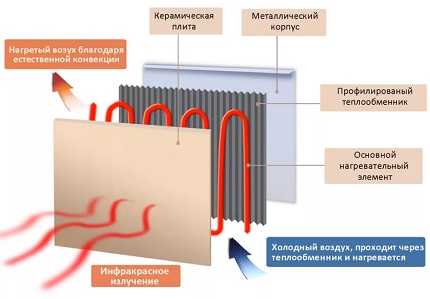
The device that does not heat the air, namely the floors, furniture and even your skin, is an infrared panel. Only after heating these surfaces is heat transferred to the surrounding air. Room heating starts from below, thereby ensuring a comfortable temperature in the area of human activity.
And now those people, at least a little friends with physics, will have a logical question - why are the thermal rays of IR panels not immediately absorbed by air? This is the whole “trick” of these devices!
In the infrared there is a kind of “black hole” where thermal rays are poorly absorbed. The widest such "window" is located in the range of 8-13.5 microns. If the thermal radiation has a wavelength close to it, the air throughput in this case is 80-85%, so IR rays reach the surface unhindered.
Classification of heating IR panels
Depending on the criterion, which is taken as the basis of division, all infrared heating appliances are divided into many classes of groups and subgroups.
- According to the method of installation and design, they are divided into:
- Embedded. Their basis is drywallon which the heater is applied (graphite thread) and thermal insulation. A decorative protective screen is installed on top of it.
- Mounted. Made of metal, glass, heat-resistant plastic. The heater is enclosed in anodized aluminum or ceramic.
Built-in models are, as it were, “tied” to building structures or furnishings, wall-mounted views can be used as an independent interior element.
- By type (location) of installation, you can distinguish:
- Skirting boards. They have a long narrow shape, therefore they are mounted at the bottom of the walls (on the border with the floor), under window sills, in niches, etc.
- Wall mounted. They have a larger heat transfer area than skirting boards. They are usually installed in the center of the wall. Moreover, they can be used not only in dry, residential premises, but also in outbuildings - even with high humidity. IR panels are not afraid of moisture, can even be placed in open street arbors, on verandas, etc.
- Ceiling. Mounted, you guessed it, in a suspended ceiling system, and this is their significant plus. Firstly, they do not spoil the design of the room. Secondly, nothing prevents the passage of infrared radiation, thus the heat is distributed evenly.
According to the principle of action, all of the listed types do not differ. They are selected based on the goals set in the arrangement and the tasks to be solved during the repair of the premises.
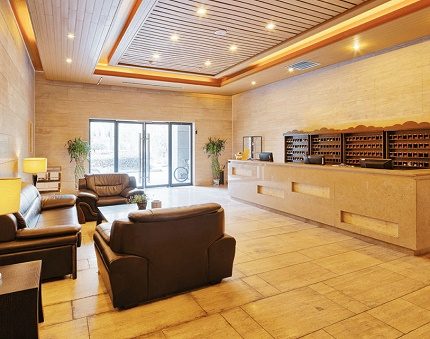
- According to the wavelength distinguish:
- Shortwave. It is characterized by heating above 300 ºС, therefore it is usually used at large-scale production facilities.
- Longwave. Softer, provide a comfortable temperature in living quarters without harming the health of others.
Regardless of the type, infrared heating panels must be installed in such a way that the infrared radiation stream does not encounter obstacles in its path. The best place to install will be a wall section, next to which there is no furniture or decor items.
Scope and specifics of operation
Best of all, IR panels cope with spot heating of a specific place in a room or in an open area. They work great on recreational areas near summer houses and private houses, territories belonging to cafes and small restaurants.
Most often, IR panel heaters are used as an additional heating source when it is necessary to increase the temperature in a particular place. For example, when it is required to “insulate” a recreation area in a large house or work space somewhere in a warehouse or industrial facility.

As for heating commercial facilities in this way, it is very economical and convenient.Using the panels, it is possible to create conditions for the most comfortable stay of a person in any particular area, while not wasting money on heating the entire room.
Weather conditions, such as humidity or wind, do not affect the radiation efficiency, which is why the panels operate excellently even in the open.
In offices, infrared panels are often used as the main source of heat. Such a solution is cheaper than installing your own mini-boiler with solid fuel or gas equipmentif the office is not connected to the central heating system.
IR heaters are more economical than oil devices, electric heaters, etc., since among all types electric heating radiant - the most economical. It is most advantageous for offices to combine a warm floor with IR panels mounted in the ceiling. Then you can maintain the room temperature at + 20 ° C even in cold weather.
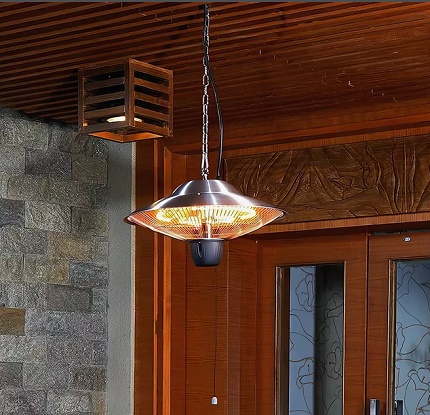
Installation Recommendations
To install infrared heating panels, you do not need special knowledge and experience. Tools that will be needed during installation are at the disposal of each owner. The instrument documentation should contain step-by-step installation instructions. If you didn’t find it, go to the panel manufacturer’s website, there is definitely such information.
Panel mounts are already included with them. If you have your own vision on this subject, you can choose the hardware yourself. However, be sure to make sure that it will support the weight of the panel you have chosen to install.
Here are a few more nuances that are best known in advance, that is, before installation begins:
- A greater percentage of manufactured panels - ceiling. Many of them are equipped with corner bracketsHowever, not all. Therefore, pay attention to this point when buying. Swivel models are better because their working surface can turn 30 °.
- For rooms with high ceilings produce models that are suspended on chains. This allows you to control the radiation intensity and select a heated area.
- To calculate how much power the heating system must have in order to warm the room with IR panels, proceed from the calculation - 1 kW per 10 m2.
- Mount the panels in accordance with the recommended installation height, since most panels of lower power heat the room more efficiently and more uniformly due to the fact that they eliminate blind spots and areas of overheating.
During installation, do not allow the heating surface to come into contact with combustible or flammable substances.
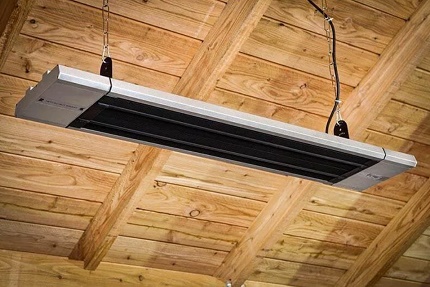
Take care of high-quality insulation of the wiring contacts when installing the device. Use plastic caps or electrical tape for this.
Pros and Cons Arguments for IR Panels
Those who plan to install infrared heating panels at home, naturally want to learn not only about their advantages, but also about the moments that can cause inconvenience. Therefore, an objective assessment of both the positive aspects and the disadvantages of this heating method is presented below.
In favor of infrared panels, the following pros can be cited:
- Impact resistance and increased strength. Infrared panels are not afraid of even bumps and drops. And all thanks to its shockproof casing and heavy-duty materials.
- Simple installation and easy operation. It is only necessary to fix the panel to the wall or ceiling and plug it into a power outlet. To do this, you do not need any special knowledge, welding machine, etc.
- Low power consumption. Firstly, no energy loss to heat the air.Secondly, infrared radiation reduces the overall temperature of the space by 3-5 ºС, which allows saving energy up to 25%. That is, the air temperature is felt on average 5 degrees higher than that shown by the thermometer when measuring. And all because not only the air that is being measured is heated, but also the objects in the room and even the person himself.
- Silent work. Such heaters will not “crackle” or “gurgle”, which means that they will not interfere with sleep and other vital processes.
- Independence from differences in the power supply network. Even if the voltage changes, this will not affect the operation of the heater.
- Preservation of normal air humidity. IR thermal panels do not dry the air like others electric convectorsthat make breathing difficult and dry the mucous membrane. They do not allow mixing of air (cold / warm), therefore the dust caused by heated air masses does not rise.
- Compact dimensions and lack of related equipment. No need to install bulky piping, radiators, boilers.
However, quite often on the Internet you can find information about the dangers of infrared radiation and negative effects on the human body. Such myths have no scientific basis for themselves.
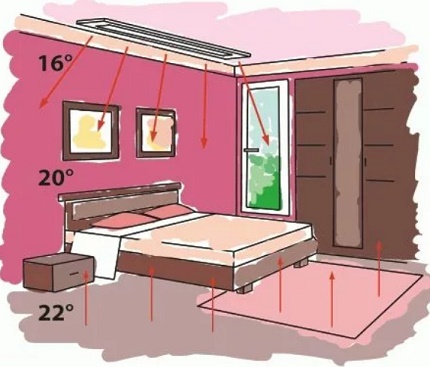
On the contrary, in this sense they are “more useful” than other common heating methods, because:
- do not dry air and do not burn air;
- do not raise dust, as there is no convection;
- keep the body in good shape due to the small contrast of temperatures.
In addition, for people suffering from joint diseases, such heaters are even recommended, since they warm the human body well, as a result of which inflammation and pain soon pass.
When long-wave infrared rays hit the skin, its receptors are irritated, to which the hypothalamus reacts, the smooth muscles of the vessels relax, as a result of which they expand.
Thus, IR rays contribute to the stimulation and improvement of blood circulation. Please note that they are completely harmless to the skin, unlike UV rays, which can even cause a change in pigmentation. If you approach the use of infrared radiation rationally, it will be difficult to find the disadvantages.

In cases of poor-quality service and neglect of devices, the following not very pleasant consequences are possible:
- If installed incorrectly, the space will not warm up in the area that would need to be processed in the first place. Infrared radiation has a clearly defined action segment.
- System Infrared heating not always harmoniously fits into the surrounding space.
- Excessive radiation can negatively affect the electronics (TV, computer and other electrical appliances). However, it all depends on whether the operating standards are respected and what dimensions the room has.
Infrared panels are a new generation heating system. It provides safe and effective heating of the home with minimal financial costs. You will not encounter any significant drawbacks when installing or using the panels, because they simply do not.
Question-answer heading
On the topic of infrared panels on the network, you can meet a lot of identical questions that first come to the person who decided to install them at home. We have consolidated the most common of them and prepared a kind of TOP-questionnaire with detailed answers.
- How long will the IR panels last?
- Their average lifespan is 25 years.Whether they work for you more or less depends on the mode in which you operate them and whether you follow the rules for care.
- What is bundled with an infrared panel? Do you need any other materials, components for its installation and operation?
– The standard configuration of the device includes the heater itself and a wire with a plug. For subsequent installation and connection, electrical wires are also required, thermostat to the outletif it is not structurally provided, automatic switches, magnetic starters and possibly other automatic devices (depending on the characteristics of the heating system).
You will also need brackets, dowels, screws, screws for mounting, but in most cases they also come as a kit.
- Do panels of different manufacturers have different dimensions or standardized sizes are the same for everyone?
- The length may vary - 1 m and 1.5 m. The first is on models with a power of 0.6 kW, the second - for 1 and 1.3 kW. The width and thickness are the same for all devices - 16.5 cm and 4 cm, respectively.
- What acts as a heating element in panels?
- It is a low temperature TENmounted in an aluminum plate that acts as a radiator.
- How much does a ceiling IR panel weigh?
- It all depends on the power of the model. For configurations of 0.6 kW, the weight is 3.5 kg, for power 1 and 1.3 kW - 4.5 kg.
- My ceiling is sheathed with plastic. Will it light up from the panel? Does it get very hot?
– Her body practically does not heat up, since heat insulated. Therefore, installation is possible on surfaces of any materials. You can not be afraid of the fire.
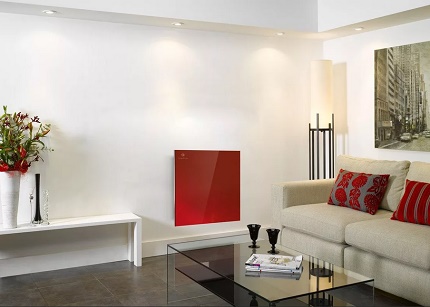
- Is it possible to leave the plates on without supervision?
- Yes, if they are equipped with a thermostat. If not, leaving it for a long time unattended is not recommended in order to avoid overheating of the room.
- How many temperature controllers do you need?
- One temperature controller per room.
- How much energy is spent with such heating? If a model with a power of 1 kW does it “wind” 1 kW / h?
- If you approach the operation wisely, then, of course, no. The whole secret is that to maintain a comfortable temperature, it is enough for the panel to work 20-30 minutes per hour.
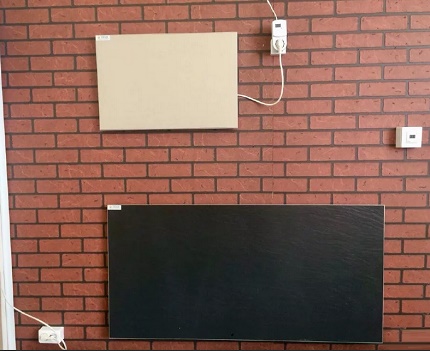
If you install a thermostat - the heater will not work continuously. It will be included as needed. If the heating will work for 20-30 minutes per hour - the electricity consumption will be from 1/3 to 1/2 the power of the device.
Conclusions and useful video on the topic
The following video will introduce the principle of operation of infrared heating panels:
Video presentation of Italian ceramic IR panels:
The following video will introduce the advantages of infrared panel heaters:
Operation of the device in accordance with the instructions will provide quick heating of the room to a high temperature and creation of comfortable climatic conditions, which are regulated by built-in or additional automation.
Want to talk about how to choose an IR heating panel for your own home / office / apartment. Share your criteria for determining the choice of appliance. Please leave comments in the block below, ask questions and post a photo on the topic of the article.

 Thermostatic valve for a radiator: purpose, types, principle of operation + installation
Thermostatic valve for a radiator: purpose, types, principle of operation + installation 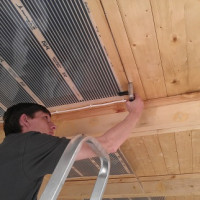 Heating "Zebra" (Zebra): the principle of operation, features, installation instructions
Heating "Zebra" (Zebra): the principle of operation, features, installation instructions 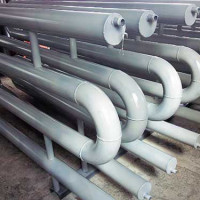 Heating registers: types of structures, calculation of parameters, installation features
Heating registers: types of structures, calculation of parameters, installation features 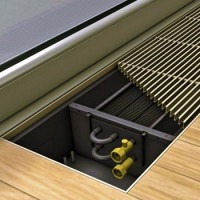 Water floor heating convectors: types, features of installation and arrangement
Water floor heating convectors: types, features of installation and arrangement 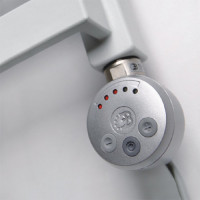 Heating elements for heating radiators: purpose, types, selection criteria, connection features
Heating elements for heating radiators: purpose, types, selection criteria, connection features  Micathermic heaters: device, principle of operation, advantages and disadvantages
Micathermic heaters: device, principle of operation, advantages and disadvantages  How much does it cost to connect gas to a private house: the price of organizing gas supply
How much does it cost to connect gas to a private house: the price of organizing gas supply  The best washing machines with dryer: model rating and customer tips
The best washing machines with dryer: model rating and customer tips  What is the color temperature of light and the nuances of choosing the temperature of the lamps to suit your needs
What is the color temperature of light and the nuances of choosing the temperature of the lamps to suit your needs  Replacement of a geyser in an apartment: replacement paperwork + basic norms and requirements
Replacement of a geyser in an apartment: replacement paperwork + basic norms and requirements
So you read - one solid pluses in these panels (except for the situation when they are improperly mounted). However, this is not my first year trampling the earth and I know that everything has its cons. I would like to know them. Interested in a situation when the panels are used as the main heating.
Good afternoon, Boris.
IR panels have two drawbacks:
1. Fragility. Ceramics require careful handling, even a slight blow can bring the panel out of working condition.
2. Power.
The vast majority of infrared panels have power from 500 to 800 watts.
The required equipment capacity for infrared heating relative to the area of the premises is expressed in relation to:
- 12-17 square meters. m - 1250-1500 W;
- 18-19 sq. m - 1750 W;
- 20-23 sq. m - 2000 W;
- 24-27 sq. m - 2500 watts.
We can conclude that for heating the bedroom you need to install from 2 to 3 IR panels, and the living room for complete heating will require the installation of at least 3 pieces and up to 4-5 IR panels, depending on the area.
The number of IR panels as the main source of heating is determined by accurate calculations and depends on the quality of insulation of the house or apartment.
Intended use above all:
- temporary heating of the premises in the autumn-spring period. Due to the appearance, one of the best options on the market.
- office premises, when there is no way to connect to central heating or to install an individual one.